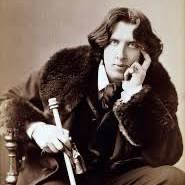Glam! Bam! Shazam!
Posted by Deirdre | Filed under Blog
Revisiting Velvet Goldmine, the film that shows why pop and fashion are made for each other

Velvet Goldmine boasts enough phosphorescent body paint and artful eye makeup to make a drag queen proud. Its visual flamboyance comes courtesy of Sandy Powell, the award-winning costume designer whose other period films include Wings of the Dove and Orlando.
A Londoner who experienced glam first-hand, Powell looked at documentary footage of glam rockers like David Bowie and Marc Bolan to imitate their high-maintenance look. She also rummaged through second-hand stores instead of creating some of the costumes from scratch. “I wanted to be authentic,” she said. Which is interesting, considering that glam was anything but.

To make Velvet Goldmine, he immersed himself in research. This involved poring over the works of Noel Coward — another British dandy — as well as Warhol and Hollywood films of the thirties and forties.
Haynes also traced glam’s history through the English dance-hall tradition, where cross-dressers were considered family entertainment, before observing its revival in such pop phenomenons as heavy metal (which absorbed glam’s tarted-up imagery), the new Romantics of the early ‘eighties, Prince and Marilyn Manson, the shock rocker who in Haynes’ opinion is a true son of glam — shaking up the establishment by posing as a threat to accepted morality.
“It was really a richly diverse range of influences that people like Bowie and Brian Eno and Bryan Ferry tapped into,” Haynes said.

In Velvet Goldmine, director Todd Haynes presents glam as the counter-revolution’s revolutionary response to the idealism, innocence and naturalism of the Sixties’ hippie period. Putting a poncy emphasis on artifice, it refuted all that was natural, authentic and real, making it part of a larger esthetic movement fathered by Oscar Wilde.

A gay American who grew up in the suburbs of Los Angeles, Haynes couldn’t get a handle on glam when it first erupted (he was 11 when glam peaked with the release of Ziggy Stardust in 1972) because it wasn’t readily available in his neck of the woods (Elton John’s Goodbye Yellow Brick Road, a PG version of glam, was.)
He now thinks that glam could only have originated in England, a country with a long tradition of actors playing the dame in pantomimes.
He also believes that glam can never truly come back: the political ideas that once allowed it to flounce into popular culture are long gone. Glam these days is a runway trend, a fantasy of the closet more than a social movement. “It’s hard to imagine another chapter of glitter opening up,” Haynes sighed.

“We’re different from what we were in the early seventies when glam first erupted. We’re a society that has shifted so much to the right and we have too much contempt for power and culture to think we could ever change things.”
Still, he hopes his film will continue to have an impact.
“I’d like to see questions about identity and sexuality ignited by Velvet Goldmine. Otherwise what’s left? An anemic hankering after nostalgia?”
